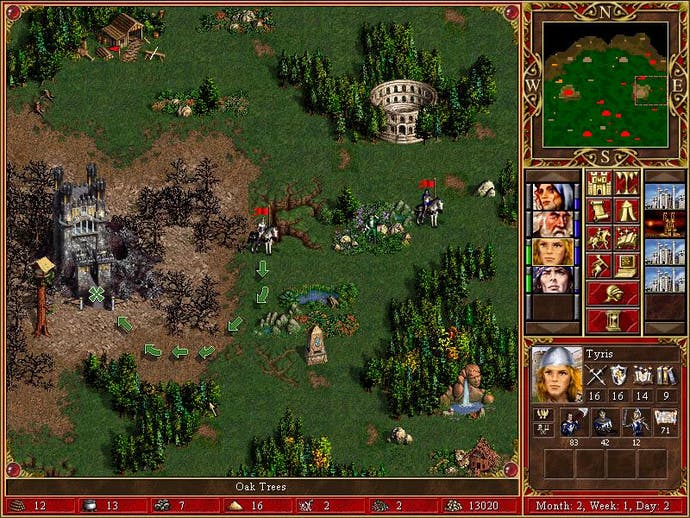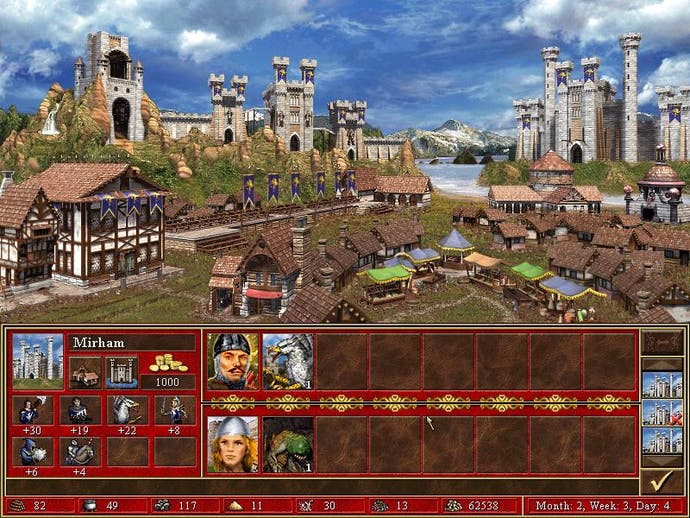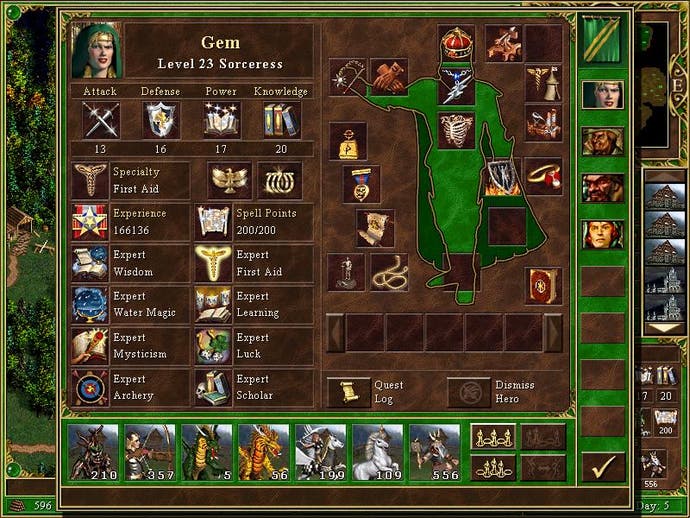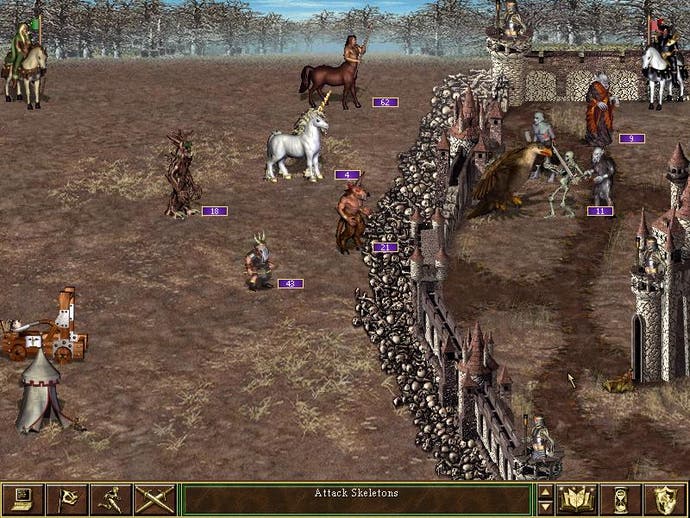Heroes of Might & Magic III : The Shadow Of Death
Role-playing strategy game reviewed

Epic
Never let it be said that 3DO don't know how to milk a franchise... Might & Magic began life somewhere back in the mists of time as a role-playing game series, now in its eighth installment.
Since then 3DO have spun off a whole horde of different games set in the same universe (with varying degrees of success) - "Crusaders of Might & Magic", "Warriors of Might & Magic", and "Legends of Might & Magic" are the most recent attempts. Perhaps the most popular though is the turn-based strategy series known as "Heroes of Might & Magic", which now boasts three games and a whole host of official add-on packs and gold editions.
And so we come to "Heroes of Might & Magic III : The Shadow Of Death" which, apart from being a strong contender for the longest game title of the year, is also the latest release in the Heroes series, featuring the original "Heroes of Might & Magic III" game as well as a collection of new campaigns, missions, artifacts and units.
The result is a package of truly awe-inspiring scope - 14 campaigns, 86 solo missions, 16 character classes, 145 different units, 138 magical artifacts, 8 city types... The full list makes "War And Peace" look like light reading.

In At The Deep End
It's all a bit overwhelming really, and it's something of a relief that the developers have thought to include a tutorial campaign for newcomers to the series, although disappointingly the accompanying text only appears in an Adobe Acrobat file on the CD-Rom which you will have to print out yourself - why couldn't this have been included in the manual, or done using in-game messages?
The basic gameplay is simple enough once you get the hang of it, although the sheer wealth of options can be frightening at times. You control one or more characters known as heroes, each of which is accompanied by an army. Most of the game is spent moving these heroes around the map, seeking out resources (which come in several different varieties), magical artifacts, cities, and special structures.
Lumberyards and various kinds of mine can be captured to provide you with more resources, which can then be used to construct more buildings in your cities, Civilization style. Your basic town hall can be upgraded to produce more revenue each week, marketplaces allow you to trade goods, and a tavern can be built to allow you to hire additional heroes. Mage guilds sell your heroes spell books, and can be upgraded to provide more powerful magic.
Meanwhile a whole variety of different buildings each allow construction of a different type of unit. Each of the eight types of town in the game has its own unique selection of eight units, ranging from basic cannon fodder like pikemen, troglodytes and skeletons, to powerful creatures such as dragons, devils and angels. Additionally, each barracks building can be upgraded to produce a more powerful version of the basic unit.
The result is an almost bewildering choice of buildings to construct, units to buy, and things to do. Getting to grips with the basics is easy enough, but mastering the game is something that takes weeks to accomplish...

We Could Be Heroes
Combat takes place in seperate chess-like battlefields, with the two armies lining up at opposite ends and units taking it in turns to move, with the fastest moving first and the rest following in order. Sadly the battlefields are rather cramped though, and don't allow much scope for clever tactics.
One thing that you will soon learn is that your heroes are far more important than the units they lead. As they win battles they gain experience and their stats will increase, as well as allowing them to learn new skills. Special structures such as universities, mercenary camps, witch's huts and standing stones can also increase your skills and stats, and maps are often liberally strewn with these.
The game's many artifacts can also temporarily improve your characters' abilities, although frustratingly these are not carried from one mission to the next in campaigns. Which is perhaps lucky, as the developers seem to have scattered them around the maps in vast quantities, sometimes leaving you with more artifacts than your characters are able to use simultaneously!
The result is that by the end of a long campaign your character will be a lethal killing machine, with spells that can obliterate entire units, from basic lightning bolts and magic arrows to area effect attacks like fireballs and meteor storms. The Implosion spell is particularly spectacular, capable of killing half a dozen or more dragons with a single attack in the hands of a powerful spellcaster.
And as your attack and defence skills are added to those of your troops, armies with a powerful hero leading them can effortlessly destroy a larger force with a less capable leader. It certainly encourages you to nurse your heroes, although it does make something of a mockery of the careful balancing of the various units, which is otherwise very good.

Into The Shadows
Another area where the game's balance breaks down is in the difficulty of the campaigns - there's a steep learning cliff from relatively straightforward to virtually impossible missions. In the end I had to resort to reducing the difficulty setting at the start of every mission.
Playing on the default difficult settings (which actually rise as the missions themselves get more difficult) was a struggle, and as some of the missions can take a day or two to complete, losing is a very frustrating experience. All too often I would play for three or four hours without even seeing the enemy, only for them to emerge from the wilderness with a totally overwhelming army that I had no chance of defeating. Time to reload .. again.
The Shadow Of Death missions are particularly hard, as they seem to be aimed more at Heroes veterans than newcomers to the series. If you own the original game and are looking for a challenge, this is ideal. But then, if you already own the original Heroes III, paying out for the game a second time might be a little grating. To be fair though, Shadow Of Death does double the number of campaigns and missions available to you. It might not be a whole new game, but it is the next best thing.

Conclusion
The graphics might be spartan, the eponymous heroes a little overpowering, the missions lengthy and the turn-based gameplay slow paced, but despite its flaws, Shadow Of Death is still a strangely addictive game. It's all too easy to get sucked in and find yourself stumbling away bleary-eyed several hours later.
It's certainly not recommended for casual gamers as it's time consuming and complex, with a positively bewildering array of units, buildings, artifacts, skills and strategic options. But if you're a strategy fan looking for a game which will keep you busy for months to come, this could be just what you're looking for...
-







